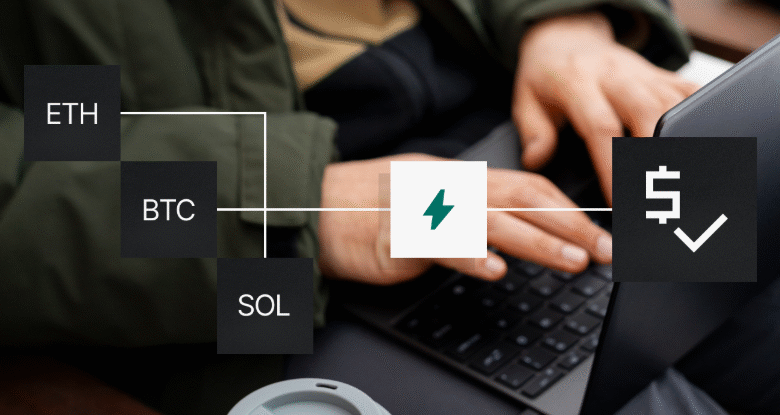Best Crypto Lending Platforms with Lowest Interest Rates 2025 Compare Top Options

The cryptocurrency lending market has evolved dramatically, offering borrowers unprecedented access to liquidity through crypto lending platforms with lowest interest rates. As traditional financial institutions struggle to compete with the efficiency and accessibility of blockchain-based lending, savvy investors are turning to these innovative platforms to secure affordable crypto loans. Whether you’re looking to leverage your digital assets for business expansion, personal investments, or simply need quick access to cash without selling your cryptocurrency holdings, finding the right platform with competitive rates can save you thousands in interest payments. This comprehensive guide examines the most cost-effective crypto lending solutions available in 2025, enabling you to navigate the complex landscape of decentralized finance (DeFi) and centralized finance (CeFi) options and secure the best possible rates for your specific needs.
Crypto Lending: How Low-Interest Platforms Work
Cryptocurrency lending operates on fundamentally different principles than traditional banking, enabling platforms to offer significantly lower interest rates. These platforms connect lenders and borrowers directly through smart contracts or centralized systems, eliminating many intermediary costs that drive up traditional loan rates.
The key advantage of crypto lending lies in its collateralized nature. Most platforms require borrowers to deposit cryptocurrency as collateral, typically worth 150-200% of the loan amount. This over-collateralization significantly reduces risk for lenders, enabling them to offer more competitive rates than unsecured traditional loans.
Types of Crypto Lending Platforms
Decentralized Finance (DeFi) Platforms operate entirely on blockchain networks through the use of smart contracts. These platforms often provide the most competitive rates because they eliminate traditional banking overhead and operate 24/7 without human intervention.
Centralized Finance (CeFi) Platforms combine the efficiency of blockchain technology with traditional financial services infrastructure. While they may have slightly higher rates than pure DeFi platforms, they often provide better user experience and customer support.
Hybrid Platforms merge elements of both DeFi and CeFi, offering competitive rates while maintaining user-friendly interfaces and regulatory compliance.
Top Crypto Lending Platforms with Lowest Interest Rates
Aave Protocol: Leading DeFi Lending with Variable Rates
Aave currently offers some of the most competitive rates in the market, with ETH borrowing rates under 3%, making it a top choice for cost-conscious borrowers. The platform’s innovative approach to interest rate optimization utilizes algorithmic models that adjust rates in response to supply and demand dynamics.
Aave’s unique features include flash loans, which allow borrowers to access liquidity without collateral for single-transaction use cases. The platform supports over 30 different cryptocurrencies and operates across multiple blockchain networks, including Ethereum, Polygon, and Avalanche.
The platform’s safety module and decentralized governance structure offer additional security and transparency, which many borrowers find appealing. Aave’s interest rates are calculated using utilization rates, meaning that rates decrease when there’s abundant liquidity and increase during periods of high demand.

Compound Protocol: Algorithmic Interest Rate Optimization
Compound has established itself as a pioneer in algorithmic lending, offering competitive rates through its mathematical approach to determining interest rates. The platform’s rates fluctuate based on supply and demand for each asset, often resulting in some of the lowest borrowing costs in the DeFi space.
The protocol’s simplicity and reliability have made it a favorite among both retail and institutional borrowers. Compound’s governance token (COMP) holders can participate in protocol decisions, including adjustments to the interest rate model that directly impact borrowing costs.
One of Compound’s strongest advantages is its battle-tested smart contracts and extensive audit history, providing borrowers with confidence in the platform’s security and reliability.
MakerDAO: Stability and Competitive DAI Loans
MakerDAO offers unique advantages for borrowers seeking stable, predictable interest rates. The platform specializes in DAI loans backed by various cryptocurrency collaterals, with rates that often remain more stable than other DeFi protocols.
The platform’s decentralized governance system allows MKR token holders to vote on stability fees (interest rates), creating a democratic approach to rate setting. This governance structure has historically resulted in borrower-friendly rates that reflect the community’s interests rather than profit maximization.
MakerDAO’s multi-collateral system supports various cryptocurrencies, including ETH, WBTC, and other major digital assets, providing flexibility for borrowers with diverse portfolios.
Morpho Protocol: Optimized Lending Rates
Morpho offers dynamically adjusted rates through platforms like Coinbase, providing competitive borrowing costs that respond to market conditions. This innovative approach often yields rates that are lower than those of traditional lending pools.
The protocol’s peer-to-peer matching system directly connects lenders and borrowers, eliminating the inefficiencies of traditional liquidity pools. When direct matches aren’t available, Morpho falls back to established protocols like Aave and Compound, ensuring users always get the best available rates.
Morpho’s rate optimization has garnered significant attention from yield-conscious DeFi users, as the protocol consistently delivers superior rates compared to its underlying protocols.
Centralized Crypto Lending Platforms with Competitive Rates
Nexo: Professional-Grade Crypto Lending
Nexo has built a reputation for offering competitive rates while maintaining the security and reliability that institutional clients demand. The platform’s rates vary based on loan-to-value ratios and collateral types, with promotional rates often available for new customers.
The platform’s instant loan approval system and flexible repayment terms make it attractive for borrowers who need quick access to funds. Nexo’s insurance coverage and regulatory compliance provide users with additional peace of mind, addressing concerns about platform security.
BlockFi: Streamlined Borrowing Experience
BlockFi offers a user-friendly platform with competitive rates for cryptocurrency-backed loans. The platform’s fixed-rate options provide predictability for borrowers who prefer stable monthly payments over variable DeFi rates.
The company’s partnerships with traditional financial institutions enable it to offer unique products like crypto-backed credit cards and interest-earning accounts alongside its lending services.
Celsius Network Alternatives
Following Celsius Network’s bankruptcy, several platforms have emerged to fill the gap in the centralized lending market. These newer platforms often offer competitive rates while implementing stronger risk management practices based on lessons learned from Celsius’s collapse.
Strategies for Securing the Lowest Crypto Lending Rates
Optimizing Loan-to-Value Ratios
Most crypto lending platforms offer better rates for borrowers who provide higher collateral ratios. By reducing your loan-to-value (LTV) ratio from 70% to 50%, you might secure interest rates that are 1-2 percentage points lower.
Consider the trade-off between capital efficiency and interest savings. While higher collateral requirements tie up more of your cryptocurrency, the interest savings over time may justify the reduced capital efficiency.
Timing Your Loans for Market Conditions
Interest rates on platforms adjust dynamically based on crypto market conditions and liquidity, so timing your loan when demand is low can help access better rates. Monitor market volatility and liquidity conditions to identify optimal borrowing windows.
During bear markets, lending demand typically decreases while available liquidity increases, creating favorable conditions for borrowers. Conversely, bull markets often see increased borrowing demand and higher rates.
Multi-Platform Rate Shopping
Don’t limit yourself to a single platform. Rate shopping across multiple protocols can reveal significant savings opportunities. Use DeFi rate tracking tools to compare real-time rates across different platforms.
Consider the total cost of borrowing, including gas fees for DeFi platforms and origination fees for centralized services. Sometimes a slightly higher interest rate with lower fees results in better overall economics.
Utilizing Governance Tokens and Platform Benefits
Many platforms offer rate discounts for users who hold their native governance tokens. Nexo token holders receive rate reductions, while Aave users can stake AAVE tokens for additional benefits.
These loyalty programs can offer significant rate reductions for regular borrowers, although you should consider the risk of volatility associated with holding platform tokens against the interest savings.
Risk Management for Low-Rate Crypto Lending
Smart Contract Risks in DeFi Platforms
While DeFi platforms often offer the lowest rates, they carry smart contract risks that centralized platforms don’t. Research the audit history and security track record of any DeFi protocol before committing significant funds.
Consider diversifying across multiple platforms rather than concentrating all borrowing on a single protocol, even if it offers the best rates. This approach reduces your exposure to platform-specific risks.
Liquidation Risk Management
All crypto lending involves liquidation risk when your collateral value falls below platform requirements. Understand each platform’s liquidation thresholds and margin call procedures before borrowing.
Maintain collateral buffers above minimum requirements to avoid forced liquidations during market volatility. Some borrowers maintain 200-250% collateralization even when platforms allow 150% to provide extra safety margin.
Platform Selection Criteria
Evaluate platforms based on multiple factors beyond interest rates. Consider the platform’s financial stability, regulatory compliance, insurance coverage, and user experience alongside rate competitiveness.
Research the team behind each platform, their funding sources, and their long-term sustainability plans. The cheapest rate isn’t valuable if the platform faces operational or regulatory challenges.
Comparing DeFi vs CeFi Lending Rates
DeFi Advantages: Maximum Rate Efficiency
DeFi protocols typically offer the lowest absolute rates because they eliminate traditional banking overhead and operate through efficient algorithmic systems. Leading DeFi platforms like Aave, Compound, and MakerDAO continue to dominate the low-rate lending space.
The transparency of DeFi protocols allows borrowers to understand exactly how rates are calculated and what factors influence rate changes. This transparency enables more strategic borrowing decisions.

CeFi Benefits: Stability and Support
Centralized platforms often provide more stable rates and better customer support, which can be valuable for borrowers who prefer predictability over absolute rate optimization. CeFi platforms also typically offer more flexible repayment terms and loan modifications.
The regulatory compliance of established CeFi platforms provides additional comfort for institutional borrowers and high-net-worth individuals who prioritize regulatory clarity.
Hybrid Solutions: Best of Both Worlds
Some newer platforms combine DeFi rate efficiency with CeFi user experience and stability. These hybrid solutions may offer competitive rates while providing the customer service and regulatory compliance that many borrowers prefer.
Read More: Best Crypto Lending Platforms with Lowest Interest Rates 2025 Compare Top Options
Advanced Strategies for Rate Optimization
Flash Loan Arbitrage Opportunities
Sophisticated borrowers can use flash loans to optimize their borrowing costs across multiple platforms. This advanced strategy requires technical expertise but can yield significant savings for large loan amounts.
Flash loans enable borrowers to refinance positions across platforms within single transactions, potentially capturing rate differences and optimizing their overall borrowing costs.
Collateral Optimization Techniques
Different platforms value different types of collateral differently. Some platforms offer better rates for stablecoin collateral, while others prefer volatile assets like ETH or BTC.
Consider the yield-earning potential of your collateral when selecting platforms. Some platforms allow you to earn yield on your collateral while borrowing against it, effectively reducing your net borrowing cost.
Rate Hedging Strategies
For borrowers concerned about variable-rate exposure, some platforms offer rate-hedging products or fixed-rate options. While these products may carry slightly higher base rates, they provide predictability for budgeting purposes.
Interest rate swaps and other DeFi derivatives can also be used to hedge variable rate exposure, though these strategies require sophisticated understanding of DeFi mechanics.
Future Trends in Crypto Lending Rates
Institutional Adoption Impact
The growing institutional adoption of crypto lending is increasing competition among platforms, which generally drives rates lower for borrowers. Large institutions bring significant liquidity to lending markets, creating downward pressure on borrowing costs.
The entry of traditional financial institutions into crypto lending may further increase competition and rate compression, benefiting borrowers across the market.
Regulatory Developments
Regulatory clarity in major markets is expected to reduce platform operational costs and risks, potentially leading to lower borrowing rates. Clear regulations also enable institutional participation, increasing market liquidity.
However, compliance costs may offset some of the efficiency gains, and different regulatory approaches across jurisdictions may create rate disparities among platforms.
Technology Improvements
Advances in blockchain technology and smart contract efficiency continue to reduce platform operational costs. Layer 2 solutions and cross-chain protocols are making decentralized finance (DeFi) lending more accessible and cost-effective.
These technological improvements typically translate into better rates for borrowers as platforms pass along efficiency gains to attract users in competitive markets.
Summary
Finding crypto lending platforms with lowest interest rates requires ongoing research, strategic timing, and careful risk management. The landscape continues evolving rapidly, with new platforms entering the market and existing ones optimizing their rate structures to attract borrowers.
DeFi protocols, such as Aave, Compound, and MakerDAO, currently offer some of the most competitive rates available, while centralized platforms provide stability and customer support that many borrowers value. The key to success lies in matching your specific needs with the right platform’s strengths.
Stay informed about market developments, regularly compare rates across multiple platforms, and maintain appropriate risk management practices. The crypto lending market’s continued maturation promises even better rates and more sophisticated products for borrowers in the years to come.
FAQs
Q1. What are the current lowest crypto lending rates available?
The lowest crypto lending rates currently range from under 3% for ETH loans on platforms like Aave to around 5% for stablecoin borrowing. Rates vary significantly based on the specific cryptocurrency, platform, loan-to-value ratio, and market conditions. DeFi platforms typically offer the most competitive rates due to their algorithmic efficiency and reduced overhead costs.
Q2. How do crypto lending platforms offer such low interest rates compared to traditional banks?
Crypto lending platforms achieve lower rates through several mechanisms, including the elimination of traditional banking overhead, algorithmic interest rate determination, over-collateralization that reduces default risk, and 24/7 automated operations. Additionally, the global nature of crypto markets creates more efficient capital allocation compared to traditional regional banking systems.
Q3. What factors affect interest rates on crypto lending platforms?
Interest rates are influenced by the dynamics of supply and demand for specific cryptocurrencies, overall market volatility, platform utilization rates, loan-to-value ratios, and types of collateral. DeFi platforms utilize algorithmic models that automatically adjust rates, whereas centralized platforms may factor in operational costs, regulatory requirements, and competitive positioning.
Q4. Are there risks associated with using low-rate crypto lending platforms?
Yes, several risks exist including smart contract vulnerabilities in DeFi platforms, liquidation risk if collateral values decline, platform operational risks, and regulatory uncertainty. Lower rates sometimes correlate with higher risks, so borrowers should evaluate the total risk-return profile rather than focusing solely on interest rates.
Q4. How can I find the best crypto lending rates for my specific needs?
Utilize rate comparison tools and regularly monitor multiple platforms, as rates are subject to frequent changes. Consider your specific collateral types, desired loan terms, and risk tolerance. Factor in additional costs like gas fees for DeFi platforms or origination fees for centralized services when comparing total borrowing costs across different options.
